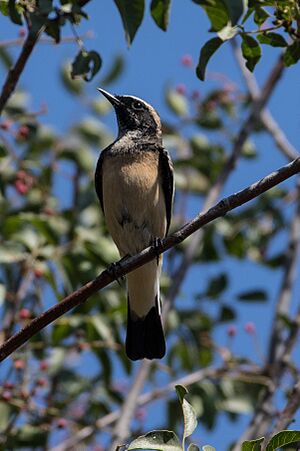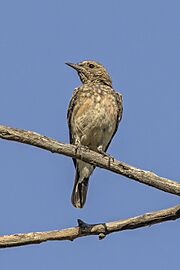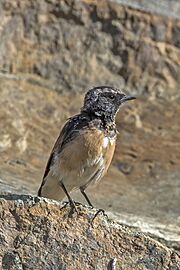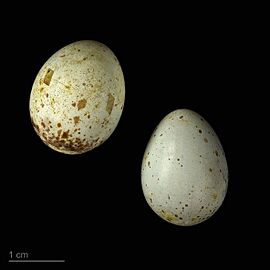Cyprus wheatear facts for kids
Quick facts for kids Cyprus wheatear |
|
|---|---|
 |
|
| Akamas, Cyprus | |
| Conservation status | |
| Scientific classification | |
| Genus: |
Oenanthe
|
| Species: |
cypriaca
|
The Cyprus wheatear (Oenanthe cypriaca) is a small, special bird. It's about 14–15 centimeters long, which is roughly the size of a sparrow. This bird is a type of passerine bird, meaning it's a perching bird. It used to be thought of as a thrush, but now scientists agree it's an Old World flycatcher.
This amazing bird is a migratory species. This means it travels long distances between its breeding grounds and where it spends the winter. The Cyprus wheatear is also endemic to Cyprus. This means it only breeds there and nowhere else in the world! After breeding, it flies south to spend winter in southern Sudan and Ethiopia. Sometimes, a few birds might get lost and appear in places like Heligoland, Germany.
Contents
What Does the Cyprus Wheatear Look Like?
The Cyprus wheatear looks a lot like another bird called the pied wheatear. However, there are some small differences. The Cyprus wheatear has a bit more black on its tail, back, and head.
Males and Females Look Alike
One interesting thing about the Cyprus wheatear is that both the male and female birds look very similar. This is different from many other bird species where the male often has brighter or more colorful feathers than the female. Scientists have studied these birds closely. They found 14 small differences in their body measurements compared to the pied wheatear.
A Unique Song
The song of the Cyprus wheatear is very special and easy to recognize. It sounds quite different from the pied wheatear's song. Many people describe it as sounding like an insect. It's made up of a series of high-pitched, buzzing sounds that come in short bursts.
Where Do They Live?
Cyprus wheatears like to sing from high places. They often perch on branches 5 to 10 meters (about 16 to 33 feet) above the ground. This is quite high for a wheatear!
Forest Homes
Unlike many other wheatears, this species often makes its home in woodlands. Scientists think it might fill a similar role in the environment as the common redstart does in other parts of Europe. The Cyprus wheatear is the most "tree-loving" wheatear in its region. It often catches insects while flying through the air or by pouncing on them from a perch.
Finding the Right Spot
Even though they like forests, Cyprus wheatears still need some open ground. They also need a certain amount of tall bushes or trees in their habitat. This mix of open and forested areas helps them find food and build their nests.
Gallery






